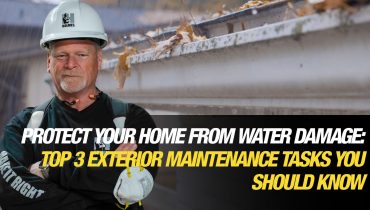Sherry Holmes Transforming a 70-Year-Old Cottage Nestled on the charming shores of Saugeen Beach, Ontario, lies a quaint 70-year-old cottage in dire need of a makeover. Sherry Holmes, renowned for...

What Is Radon Gas In A House?
By Mike Holmes
Mike’s Advice / Home Safety & Maintenance
Wednesday, September 24th, 2025 @ 6:19am
What Is Radon Gas?
Uranium is everywhere in the ground and in all kinds of soil, and when it starts to break down it creates a radioactive gas that is odourless, colourless, and tasteless. This gas is radon. It is the leading cause of lung cancer for non-smokers.
When this gas is released into the atmosphere, it gets diluted. But if it finds its way into your home it can accumulate, which is when it can become dangerous. This is why we make sure all of our projects have been tested for radon.
Is Radon Gas Dangerous?
Being exposed to high doses of radon over a long period is a major health risk. According to Health Canada, radon is linked to about 16 percent of all lung cancer deaths in Canada. That makes it the second leading cause of lung cancer; first for non-smokers.
Being a smoker significantly increases a person’s risk of developing lung cancer if they are also exposed to elevated levels of radon. For example, people who are only exposed to radon have a 1 in 20 chance of developing lung cancer whereas those who are also smokers have a 1 in 3 chance.
DID YOU KNOW?
It’s estimated that 3,200 people die every year in Canada due to radon. In the US it’s about 20,000!
How Does Radon Come Into The House?
Radon can seep into a home through pipes, windows, sumps, unfinished floors, cracks in foundation walls, and floors, even through foundation walls. Remember, concrete is porous and radon is a gas. That means it can penetrate through the tiny holes in a home’s foundation walls.
Here are some more ways Radon can come into your house:
- Soil
- Windows
- Cracks in walls & floors
- Loose pipe fittings & support posts
- Floor drains & sump pumps
- Wall & floor joints
- Groundwater
Measuring Radon in Canada
Radon is measured in becquerels, which is a unit used to measure radioactive concentration. The Canadian guideline for radon dictates that a home should not contain more than 200 Bq/m3 or 200 units of becquerels per cubic meter. Before 2007, the national guideline for radon was 800 Bq/m3.
Between 2009 and 2010, Health Canada did a cross-country survey that revealed about 7 percent of Canadians are living in homes with radon levels above the guideline.
The survey also revealed that different parts of the country have different levels of radon. For example, Manitoba, New Brunswick, Saskatchewan, and the Yukon had the highest percentages of radon, whereas Nunavut and Prince Edward Island had the lowest.
Testing for Radon
Regardless of location, the only way to know if a home contains dangerous levels of radon is to test for it. One house can have radon levels next to zero while the house next door can have levels that are off the charts.
Radon levels also fluctuate depending on the weather, humidity, the home’s construction, and the time of year. For example, winter is the best time to test for radon because windows and doors tend to be kept shut during most of the season, which allows any toxins in the home to build up. This provides a good reading on indoor air quality and a home’s exposure to radon.
Did You Know?
Some granite countertops have been known to emit radon. That’s because granite is mined from the ground where uranium and radon are also found.
Homeowners can purchase radon test kits themselves from a big box store but make sure you follow the instructions. For example, radon detectors must be placed a certain distance away from interior walls, exterior walls, below the ceiling, and above the ground. Do it the wrong way and the test results can be compromised.
However, I recommend homeowners hire a professional to test for radon, such as a home inspector certified by the Canadian National Radon Proficiency Program (C-NRPP), in order to ensure accurate test results. You can also hire a home inspector with special C-NRPP designation to test your home for radon.
Short & Long-Term Testing for Radon
There are short-term and long-term tests available. A short-term test can last anywhere between 2 – 7 days, whereas long-term testing can last as long as 365 days.
Due to the fluctuations in radon levels, long-term testing provides a more accurate indication of a home’s average year-round radon levels. For this reason, Health Canada recommends long-term testing.
Getting Rid of Radon Gas
Reducing radon levels in a home can cost anywhere between $500 and $3,000. If your test results show an elevated level, look into these mitigation options:
- A mitigation system that attaches to your ERV/HRV.
- A membrane for new construction. One of my Holmes-approved partners installed this system. Read about the project in BC here.
- Well water mitigation devices tackles radon issues in your water. You can read more about it below.
If your home requires radon mitigation, make sure you hire a contractor who is certified by the Canadian National Radon Proficiency Program (C-NRPP) and who has plenty of experience reducing radon levels in residential construction.
We spend most of our time indoors, so we must think about our indoor air quality. I recommend that every homeowner test their air quality, whether they are buying, renovating, or simply living in a home. Read why your home’s indoor air quality is so important.
READ NEXT:










